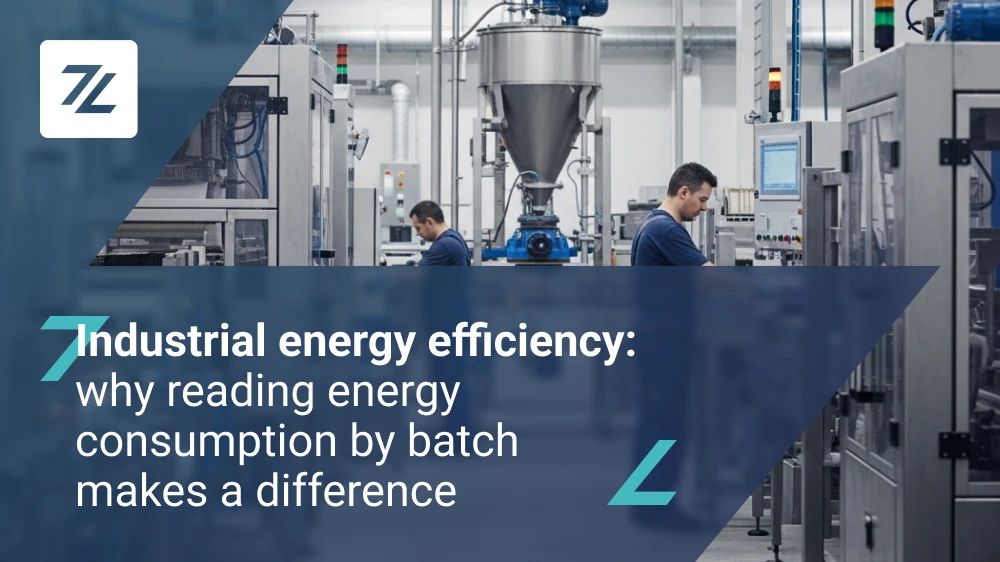In industrial settings, analyzing energy sources plays a key role in assessing the actual sustainability of the energy systems powering production plants.
In this blog, we’ll take a closer look at the key aspects of energy production and consumption—from economic costs and total usage to the environmental impact of energy generation processes. We’ll also explore energy balance, self-consumption, and energy self-sufficiency.
But how has industrial energy monitoring evolved, and what are the benefits of adopting a smarter, more predictive approach? Let’s explore the dynamics behind this transformation.
The Evolution of Industrial Energy Monitoring: From Consumption to Prediction
Traditionally, energy monitoring focused primarily on consumption metrics—like kilowatt-hours (kWh) used—which provided a snapshot of how much energy was consumed over time. However, this approach offered little insight into the relationship between energy use and operational efficiency.
With the rise of IoT and AI technologies, industrial energy monitoring has shifted from basic consumption tracking to predictive, data-driven management.
IoT enables real-time data collection from connected machinery and devices, while AI analyzes this data to uncover patterns, trends, and correlations that would otherwise go unnoticed. This shift to predictive intelligence allows manufacturers to anticipate consumption peaks, detect energy waste, and optimize energy usage based on the actual needs of the production line.
Leveraging IoT and AI in Industrial Energy Monitoring
By integrating IoT, manufacturers can gather vast amounts of real-time data through sensors installed on machines and equipment. These sensors measure key parameters such as temperature, humidity, speed, and of course, energy consumption.
The collected data is sent to centralized platforms where AI takes over. Using advanced algorithms, AI analyzes the data to detect anomalies and generate forecasts based on energy consumption models. This provides not only full visibility into energy use but also actionable insights to reduce waste and boost equipment performance.
Predictive intelligence can, for example, suggest the ideal time to shut down a machine or recommend how to reorganize production to avoid peak-hour energy surges. This smarter management approach helps reduce energy costs and enhance overall production efficiency.
Linking Energy Consumption to Productivity
One of the core advantages of smart energy industrial monitoring is its ability to connect energy consumption with productivity. In the past, energy usage was viewed in isolation from production performance. Today, digitalization makes it possible to correlate energy data with real-time production outcomes.
It’s not just about monitoring core production machinery. To truly understand energy efficiency, you need insight into all energy sources within the factory—from auxiliary machines to electrical panels and even self-produced energy, like solar.
A plant with high energy consumption may not be inefficient if it also delivers proportionally high productivity. On the other hand, a plant with low energy usage but poor output may need process optimization or equipment upgrades. Combining energy and production data helps businesses strike the right balance between consumption and output—boosting operational efficiency and minimizing waste.
The Business Benefits of Predictive Energy Monitoring
Implementing a smart industrial energy monitoring system brings significant advantages, including:
- Reduced Energy Costs: Optimizing energy usage directly translates to lower costs—a critical factor for business competitiveness.
- Improved Operational Efficiency: Correlating energy data with production performance helps companies identify inefficiencies and streamline operations.
- Failure Prevention: Predictive analytics can spot potential issues before they lead to equipment failure or downtime.
- Sustainability: Efficient energy use doesn’t just cut costs—it also reduces the carbon footprint of industrial operations.
- Compliance and Incentives: Accurate energy tracking helps companies meet environmental regulations and qualify for energy efficiency incentives.
Why Should a Production Manager Monitor Energy Flows?
Cut costs, ensure uptime, and get the data you need to make informed decisions.
In today’s highly competitive manufacturing landscape, every wasted kilowatt-hour is lost profit. Zerynth offers a powerful solution for real-time monitoring of key electrical parameters across your plant—delivering valuable insights, not just numbers. But why should you seriously consider adopting it?
Full Control Over Energy Consumption
By tracking parameters like voltage, current, and power (active, reactive, apparent) for each phase, you can:
- Pinpoint exactly where and when energy is being consumed.
- Identify if machines are drawing more power than expected.
- Detect anomalies before they cause unplanned downtime.
Energy Savings = Cost Savings
Take power factor, for example—it has a direct impact on your electricity bills. A plant operating with a low power factor ends up paying for more energy than it actually uses.
With Zerynth, you can spot these inefficiencies early and take corrective action—avoiding supplier penalties and boosting your plant’s overall efficiency.
Stability and Production Continuity
Phase imbalance or high THD (Total Harmonic Distortion) often go unnoticed—until something breaks. Overheating motors, tripped inverters, stopped machines—these are the consequences.
Zerynth’s system alerts you ahead of time, allowing you to take action before small issues lead to production stoppages.
Actionable Data for Strategic Decisions
We’re not talking about simple charts. Zerynth provides structured, accessible, and integrable data that allows you to:
- Calculate energy KPIs for each line or cost center.
- Compare shifts, departments, or entire sites.
- Justify energy efficiency investments—a valuable tool for ESG initiatives and certifications.
Do you want to discover more about energy monitoring? Contact us today!
Share This Story, Choose Your Platform!
Follow Zerynth on
Latest Posts






